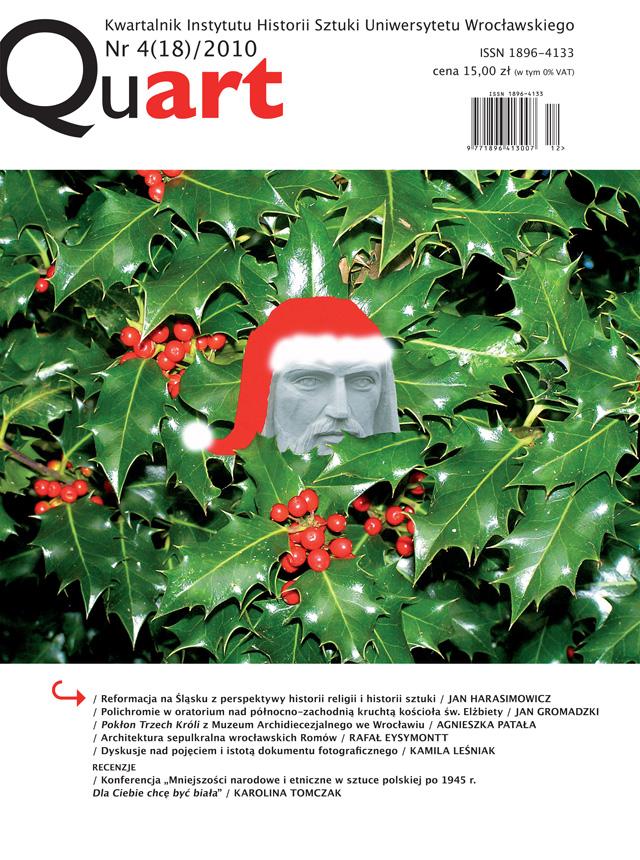Architektura sepulkralna wrocławskich Romów
Funeral architecture of the Wrocław Roma
Author(s): Rafał EysymonttSubject(s): Fine Arts / Performing Arts, Architecture, History of Art
Published by: Wydawnictwo Uniwersytetu Wrocławskiego
Summary/Abstract: Chapels in the Osobowice Cemetery are few in Wrocław objects connected with national minorities. The Roms appeared in Lower Silesia after the second World War, partly free willingly, partly within the ‘Vistula’ action, though it should be stated that in the area of the Recovered Territories, which were settled by new comers from Poland, they felt good enough. Forms and ideological contents of their chapels-mausolea are related with extremely complex Romany funeral rituals on the one hand and on the other hand they show integration of the Romany circles with culture of the Polish lands. The chapels of Romany families, of the royal Łakatoszes among others, designed by Wrocław architects, refer to the tradition of Polish Renaissance and resemble to a large extent the chapels of Kalwaria Zebrzydowska. Some of them, however, to some extent have relations with architecture of Transylvania. One of the chapel designers also speaks on the Roms’ interest in European architecture. Deep vestibules with columns allow families of the burried one to meet together during his drom passage to heaven’s door. An original relief of one of the Romany tombstones depicting a car also indicates the symbolics of a passage. The Roms from Wrocław pay large sums to build chapels for the passed away members of their families, even for those who had died on the other side of the Atlantic, although in many cases the sums are not sufficient to end up the commissions. On economical grounds some of the chapels are raised by the Roms themselves. In this case, however, the effect is far worse, despite their attempts to follow classical architectural motifs.
Journal: Quart
- Issue Year: 18/2010
- Issue No: 4
- Page Range: 63-82
- Page Count: 20
- Language: Polish

